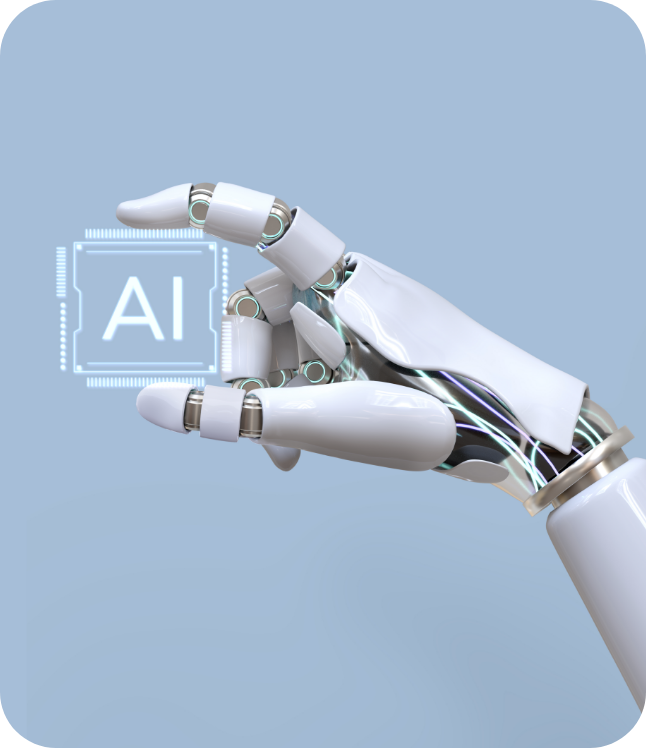
Harness the power of patient clinical data to make informed decisions that improve patient care and operational efficiency.

Tailor interventions and treatments to individual patient needs, ensuring better health outcomes and higher patient

Streamline workflows and reduce administrative burdens, allowing your team to focus on what matters most—patient care.

Anticipate patient needs and potential health issues before they arise, enabling proactive care and reducing hospital readmissions

Ensure all patient data is handled with the highest standards of security and compliance, safeguarding patient privacy and trust.

Seamlessly integrate with existing Electronic Health Records (EHR) systems to provide real-time insights.

Utilize machine learning and AI to analyze vast amounts of clinical data and predict the next best actions.

Intuitive dashboards and reports that provide clear, actionable insights for healthcare professionals.

Adaptable to the size and needs of your healthcare facility, from small clinics to large hospital networks.
Empower your healthcare operations with our Intelligent Next Best Action Solution. For many organizations, the first step is consolidating data from multiple disparate systems and data sources. These may be some combination of clinical systems, administrative systems and external sources. Bringing that data together into a centralized data repository and then enabling AI to use tools like Natural Language Processing (NLP) allows users easier, more efficient engagement with information. From there, capabilities such as intelligent process automation and intelligent analytics can be brought to bear to surface data thru a variety of mechanisms, both to end users as well as to patients themselves via internal systems, portals, email or text messaging depending on the urgency and necessity.

Nursing and Physician Shortages : The ongoing shortage of nurses and physicians continues to strain healthcare systems, impacting patient care and increasing workloads for existing staff
Burnout and Retention: High levels of burnout among healthcare workers lead to increased turnover rates, making retention a significant challenge.
Electronic Health Records (EHR) Systems : Integrating and maintaining EHR systems can be complex and costly, requiring continuous updates and training.
Telehealth Expansion : While telehealth offers many benefits, ensuring its seamless integration into traditional care models and maintaining patient data security are ongoing challenges.


Changing Regulations : Keeping up with evolving healthcare regulations and ensuring compliance can be resource-intensive.
Data Privacy : Protecting patient data in compliance with regulations like HIPAA is critical, especially with increasing cyber threats
Cost Management : Rising operational costs, including those for medical supplies and technology, put pressure on healthcare providers to manage budgets effectively.
Reimbursement Rates : Navigating complex reimbursement models and ensuring timely payments from insurers can be challenging.
Quality of Care : Maintaining high standards of patient care while managing resource constraints is a constant challenge.
Patient Engagement : Enhancing patient engagement and satisfaction through personalized care and improved communication is essential

Rising Healthcare Costs : Managing the increasing costs of healthcare services and pharmaceuticals is a major challenge for payers.
Fraud and Abuse : Detecting and preventing fraud and abuse in healthcare claims is critical to controlling costs.
Policy Adjustments : Adapting to new healthcare policies and regulations, such as changes in the Affordable Care Act, requires agility and compliance.
Value-Based Care Models :Transitioning to value-based care models, which focus on patient outcomes rather than service volume, involves significant changes in payment structures and care coordination.
Data Analytics : Leveraging big data and analytics to improve decision-making and patient outcomes is essential but requires significant investment in technology and expertise.
Interoperability : Ensuring interoperability between different healthcare systems to facilitate seamless data exchange and improve care coordination
Personalized Care : Providing personalized care and support to members through targeted interventions and wellness programs.
Digital Tools : Enhancing member engagement through digital tools and platforms, such as mobile apps and online portals, to improve access to information and services.

Automating Routine Tasks : AI can automate administrative tasks such as scheduling, documentation, and billing, reducing the workload on healthcare staff and allowing them to focus more on patient care.
Predictive Analytics : AI can predict patient influx and optimize staffing levels accordingly, ensuring that healthcare workers are not overburdened during peak times.
AI-driven Mental Health Tools :AI can automate administrative tasks such as scheduling, documentation, and billing, reducing the workload on healthcare staff and allowing them to focus more on patient care.
Predictive Analytics : AI can predict patient influx and optimize staffing levels accordingly, ensuring that healthcare workers are not overburdened during peak times.
Personalized Learning : AI can create personalized training programs that help healthcare workers develop new skills and stay updated with the latest medical practices, enhancing job satisfaction and career growth.
Virtual Assistants : AI-powered virtual assistants can facilitate better communication among healthcare teams, ensuring that important information is shared promptly and accurately.
Collaboration Tools : AI can enhance collaboration tools, making it easier for healthcare workers to coordinate care and share knowledge, reducing the feeling of isolation and improving team dynamics.
Employee Feedback Analysis : AI can analyze feedback from staff surveys and other sources to identify common issues and areas for improvement, helping management to address concerns proactively.
Retention Strategies : AI can provide insights into factors contributing to staff turnover and suggest targeted retention strategies, such as recognition programs, flexible scheduling, and career development opportunities
Clinical Decision Support Systems (CDSS) : AI can assist healthcare workers by providing evidence-based recommendations and alerts, reducing the cognitive load and helping them make informed decisions quickly.
Error Reduction : AI can help reduce errors by cross-referencing patient data and flagging potential issues, which can alleviate stress and improve job satisfaction.
Remote Monitoring : AI can support telehealth services, allowing healthcare workers to manage patient care more efficiently and reduce the need for inperson visits, which can be time-consuming and stressful.
Patient Management Systems : AI can streamline patient management, ensuring that healthcare workers have access to comprehensive patient information and can provide better care with less effort.
Intelligent Analytics : Using AI and predictive analytics to forecast patient needs, optimize resource allocation, and improve care outcomes
Data Security : Implementing robust cybersecurity measures to protect patient data and ensure compliance with regulations.
Intelligent Process and Intelligent Document Automation : Streamlining administrative processes through automation to reduce costs and improve efficiency.
Personalized Care: Intelligent Next Best Action : Leveraging data to provide personalized care and improve patient and member satisfaction.
Digital Engagement : Enhancing engagement through digital platforms and tools for better access to information and services.
By integrating these solutions, healthcare providers and payers can enhance their operational resilience, optimize costs, and better navigate the challenges posed by the evolving healthcare landscape. How can we help your organization?
